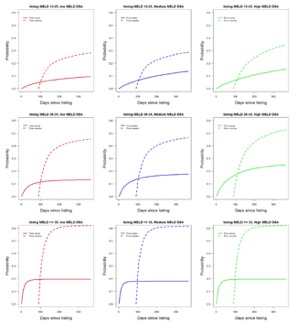Inactive Status Change is an Independent Predictor of Waitlist Mortality and Disproportionately Impacts Patients in Donor Service Areas with a Higher Median MELD at Transplant
1Surgery, Yale University School of Medicine, New Haven, CT, 2UNOS, Richmond, VA, 3Yale University, New Haven, CT
Meeting: 2020 American Transplant Congress
Abstract number: C-250
Keywords: Allocation, Donation, Liver, Liver transplantation
Session Information
Session Name: Poster Session C: Non-Organ Specific: Public Policy & Allocation
Session Type: Poster Session
Date: Saturday, May 30, 2020
Session Time: 3:15pm-4:00pm
 Presentation Time: 3:30pm-4:00pm
Presentation Time: 3:30pm-4:00pm
Location: Virtual
*Purpose: Liver waitlist mortality is calculated by including both active and inactive patients. As inactive patients are unable to receive organ offers, models that adjust for activity status may improve accuracy of waitlist outcomes. For patients listed active, the quantitative impact of an inactive status change on waitlist mortality is unknown, as are the differences between the different donor service areas (DSA).
*Methods: We constructed a multistate model using the OPTN database (06/18/2013 to 06/08/2018) to calculate the probability of the following competing risks: deceased donor transplant, living donor transplant, waitlist removal due to death or other/well. MELD exception patients including Status-1 were excluded. We grouped DSA’s by their Median Meld at Transplant (MMaT) and separated them into tertiles (low, medium, high MMaT DSA). Following an active listing, we measured the probability of death with or without an inactive status change at 90 days from listing. This is an adjusted model.Note: the probabilities are predicted for a 56 years old non-Hispanic white male, with blood type O and private insurance (Figure)
*Results: There were 25,216 patients of which 24,838 (98.5%) were listed as active. The most common reason for an inactive status change was temporarily too sick, which was used most often in the low MMaT DSA category (low MMaT (61.7%); medium MMaT (57.2%); high MMaT (52.3%). Other common reasons, incomplete work-up (11.2%) and insurance issues (11.2%) were not appreciably different across DSA tertiles. Dynamic prediction modelling shows that an inactive status change at 90 days is associated with higher mortality across all listing MELD and DSA categories. The probability of death did not differ among MMaT DSA categories for patients with initial MELD>35, but an inactive status change resulted in significantly higher mortality in the MELD 15-25 and 26-34 groups in the highest MMaT DSA tertile (figure).
*Conclusions: An inactive status change markedly increases liver transplant waitlist mortality. The probability of death after an inactive status change is much larger in DSA’s where the MMaT is the highest.
To cite this abstract in AMA style:
Batra R, Noreen S, Stewart D, Haakinson D, Gan G, Deng Y, Kulkarni S. Inactive Status Change is an Independent Predictor of Waitlist Mortality and Disproportionately Impacts Patients in Donor Service Areas with a Higher Median MELD at Transplant [abstract]. Am J Transplant. 2020; 20 (suppl 3). https://atcmeetingabstracts.com/abstract/inactive-status-change-is-an-independent-predictor-of-waitlist-mortality-and-disproportionately-impacts-patients-in-donor-service-areas-with-a-higher-median-meld-at-transplant/. Accessed December 13, 2025.« Back to 2020 American Transplant Congress

